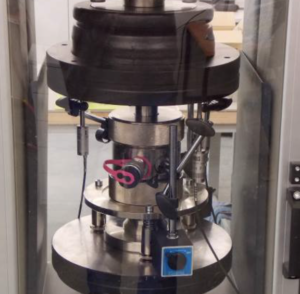What Are the Biological Aspects in Soil Tests?
When we think about soil testing, physical properties like texture or chemical aspects like pH often come to mind. But soil is also a living ecosystem1, full of microorganisms, enzymes, and small creatures that play a critical role in nutrient cycling2 and plant health. The biological aspects in soil tests3 give us deep insight into how healthy and functional the soil really is—not just what it contains, but how well it supports life. These tests help scientists, farmers, and ecologists make more informed decisions about soil management and ecosystem sustainability.
Soil Microbial Community Analysis
Microbial community analysis reveals the diversity and abundance of bacteria, fungi, and other microbes in soil. These microorganisms are crucial for decomposition, nutrient cycling, and disease suppression4.
Common Techniques:
- DNA sequencing (16S rRNA / ITS analysis)5 to identify microbial species.
- Phospholipid fatty acid (PLFA) profiling6 to quantify biomass.
- Quantitative PCR to measure specific microbial groups (e.g., nitrogen-fixers, mycorrhizal fungi).
Example Data Output
| Site | Bacterial Diversity (Shannon Index) | Fungal-to-Bacterial Ratio |
|---|---|---|
| Undisturbed Forest | 4.2 | 0.8 |
| Cropland | 2.8 | 0.4 |
| Urban Green Space | 3.1 | 0.5 |
These tests help determine whether soil microbial life is balanced, resilient, and capable of supporting healthy plant growth.

Soil Enzyme Activity Detection
Soil enzymes are biological catalysts produced by microbes and plant roots. They are essential for breaking down organic matter and making nutrients available to plants.
Key Soil Enzymes:
- Dehydrogenase: Indicates overall microbial activity.
- Urease: Breaks down urea into usable nitrogen.
- Phosphatase: Releases phosphate from organic compounds.
- β-glucosidase: Helps decompose cellulose and organic carbon.
Enzyme Activity Table
| Enzyme | Function | High Activity Indicates… |
|---|---|---|
| Dehydrogenase | General microbial respiration | Healthy microbial metabolism |
| Urease | Nitrogen transformation | Strong nitrogen mineralization |
| Phosphatase | Phosphorus availability | Efficient P cycling |
| β-glucosidase | Organic matter breakdown | Active carbon decomposition |
By tracking enzyme activity, researchers can monitor soil health, contamination, and fertility trends.

Plant–Soil Interaction Experiments
Biological soil tests also include studies of how plants interact with soil microbes. These experiments reveal how symbiotic relationships—like those between roots and mycorrhizal fungi—improve nutrient uptake and stress resistance.
Experimental Approaches:
- Rhizobox studies to visualize root-microbe interactions.
- Isotope tracing to see how nutrients flow from soil to plant.
- Inoculation trials with beneficial microbes (e.g., rhizobia, arbuscular mycorrhizae).
Sample Result:
| Treatment | Root Biomass (g) | N Uptake (mg) | Colonization Rate (%) |
|---|---|---|---|
| Control (no microbes) | 3.2 | 45 | 0 |
| With Mycorrhizal Fungi | 5.6 | 80 | 65 |
| With Rhizobia | 4.8 | 72 | — |
These tests show how fostering biological interactions can enhance plant performance and reduce fertilizer use.

Soil Fauna Impact Tests
Soil fauna—like earthworms, nematodes, and arthropods—are often overlooked but vital to soil health. Biological tests evaluate how these animals affect soil structure, organic matter breakdown, and microbial activity.
Common Assessments:
- Earthworm population counts to gauge soil aeration and fertility.
- Nematode community structure analysis to assess trophic balance and stress.
- Litter decomposition studies using faunal exclusion techniques.
Fauna Function Table
| Soil Fauna | Ecological Role | Indicator of… |
|---|---|---|
| Earthworms | Soil mixing, nutrient release | Soil fertility and porosity |
| Nematodes | Grazing on microbes, nutrient cycling | Soil food web complexity |
| Springtails | Decomposition of organic matter | Organic matter turnover |
A healthy population of soil fauna indicates a dynamic and resilient soil ecosystem.

Conclusion
Biological aspects in soil tests go far beyond nutrient levels—they provide a living profile of soil health7. From microbial community diversity and enzyme activity to plant interactions and soil fauna analysis, these tests are key to understanding how soil supports life above and below ground. For farmers, landscapers, and ecologists, focusing on biological health is essential for creating soils that are productive, sustainable, and ecologically sound8.
-
Understanding the concept of a living ecosystem in soil can enhance your knowledge of soil health and its importance in agriculture and ecology. ↩
-
Learning about nutrient cycling is essential for effective soil management and improving agricultural practices for better yields. ↩
-
Exploring the biological aspects in soil tests can provide valuable insights into soil health and its impact on plant growth and sustainability. ↩
-
Understanding these processes is vital for maintaining soil health and ecosystem balance. Explore this link to learn more about their roles. ↩
-
This technique is essential for identifying microbial species, which is crucial for understanding soil ecosystems. Discover its significance here. ↩
-
PLFA profiling is a key method for quantifying microbial biomass, providing insights into soil health. Learn more about its applications. ↩
-
Understanding the living profile of soil health can enhance your soil management practices and improve crop yields. ↩
-
Exploring methods for creating sustainable soils can lead to better agricultural practices and environmental conservation. ↩







